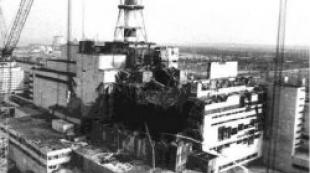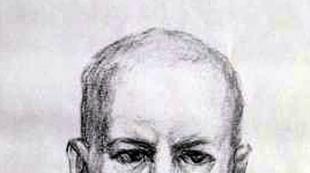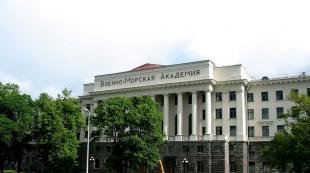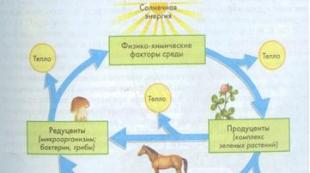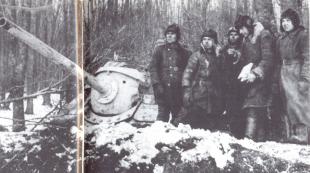Pathways of lipid transport in the body. Lipid transport is a separate task. Biological functions of lipids
Lipids are transported in the aqueous phase of the blood as part of special particles - lipoproteins. The surface of the particles is hydrophilic and is formed by proteins, phospholipids and free cholesterol. Triacylglycerols and cholesterol esters make up the hydrophobic core.
Proteins in lipoproteins are usually called apoproteins, there are several types of them - A, B, C, D, E. In each class of lipoproteins there are corresponding apo-
proteins that perform structural, enzymatic and cofactor functions.
Lipoproteins differ in the ratio of triacylglycerols, cholesterol and its esters, phospholipids, and how complex proteins consist of four classes.
o high density lipoproteins (HDL, α-lipoproteins, α-LP).
Chylomicrons and VLDL are primarily responsible for the transport of fatty acids in TAGs. High and low density lipoproteins - for the transport of cholesterol and fatty acids in the composition of cholesterol esters.
TRANSPORT OF TRIACYLGLYCEROLS IN THE BLOOD
Transport TAG from intestines to tissues(exogenous TAG) is carried out in the form of chylomicrons, from liver to tissues(endogenous TAGs) - in the form of very low density lipoproteins.
V TAG transport to tissues can be divided into a sequence of the following events:
1. The formation of immature primary HM in intestines.
2. The movement of primary HM through the lymphatic ducts into blood .
3. Maturation of HM in blood plasma - obtaining proteins apoC-II and apoE from HDL.
4. Interactionlipoprotein lipase endothelium and loss of most of the TAG. Educational
analysis of residual HM.
5. The transition of residual HM to hepatocytes and complete disintegration of their structure.
6. Synthesis of TAG in the liver from food glucose. The use of TAGs that came as part of residual HM.
7. Formation of primary VLDL in liver.
8. Maturation of VLDL in blood plasma - obtaining apoC-II and apoE proteins from HDL.
9. Interactionlipoprotein lipase endothelium and loss of most of the TAG. The formation of residual VLDL (in other words, intermediate density lipoproteins, LDL).
10. Residual VLDL are converted into hepatocytes and completely disintegrate, or remain
v blood plasma. After exposure to hepatic TAG lipases in the liver sinusoids convert VLDL to LDL.
I approve
Head cafe prof., d.m.s.
Meshchaninov V.N.
______''_____________2005
Lecture No. 12 Topic: Digestion and absorption of lipids. Transport of lipids in the body. Lipoprotein exchange. Dyslipoproteinemia.
Faculties: medical and preventive, medical and preventive, pediatric.
Lipids - this is a group of organic substances diverse in structure, which are united by a common property - solubility in non-polar solvents.
Lipid classification
According to their ability to hydrolyze in an alkaline environment with the formation of soaps, lipids are divided into saponifiable (containing fatty acids) and unsaponifiable (single-component).
Saponifiable lipids contain in their composition mainly alcohols glycerol (glycerolipids) or sphingosine (sphingolipids), according to the number of components they are divided into simple (consist of 2 classes of compounds) and complex (consist of 3 or more classes).
Simple lipids include:
1) wax (ester of higher monohydric alcohol and fatty acid);
2) triacylglycerides, diacylglycerides, monoacylglycerides (an ester of glycerol and fatty acids). In a person weighing 70 kg, TG is about 10 kg.
3) ceramides (ester of sphingosine and C18-26 fatty acid) - are the basis of sphingolipids;
Complex lipids include:
1) phospholipids (contain phosphoric acid):
a) phospholipids (ester of glycerol and 2 fatty acids, contains phosphoric acid and amino alcohol) - phosphatidylserine, phosphatidylethanolamine, phosphatidylcholine, phosphatidylinositol, phosphatidylglycerol;
b) cardiolipins (2 phosphatidic acids connected through glycerol);
c) plasmalogens (an ester of glycerol and a fatty acid, contains an unsaturated monohydric higher alcohol, phosphoric acid and amino alcohol) - phosphatidalethanolamines, phosphatidalserins, phosphatidalcholines;
d) sphingomyelins (ester of sphingosine and C18-26 fatty acid, contains phosphoric acid and amino alcohol - choline);
2) glycolipids (contain carbohydrate):
a) cerebrosides (ester of sphingosine and C18-26 fatty acid, contains hexose: glucose or galactose);
b) sulfatides (an ester of sphingosine and C18-26 fatty acid, contains hexose (glucose or galactose) to which sulfuric acid is attached in the 3 position). Many in white matter;
c) gangliosides (ester of sphingosine and C18-26 fatty acid, contains oligosaccharide from hexoses and sialic acids). Found in ganglion cells
Unsaponifiable lipids include steroids, fatty acids (a structural component of saponifiable lipids), vitamins A, D, E, K, and terpenes (hydrocarbons, alcohols, aldehydes, and ketones with several isoprene units).
biological functions lipids
Lipids perform a variety of functions in the body:
Structural. Complex lipids and cholesterol are amphiphilic, they form all cell membranes; phospholipids line the surface of the alveoli, form a shell of lipoproteins. Sphingomyelins, plasmalogens, glycolipids form myelin sheaths and other membranes of nerve tissues.
Energy. In the body, up to 33% of all ATP energy is formed due to lipid oxidation;
Antioxidant. Vitamins A, D, E, K prevent FRO;
Reserve. Triacylglycerides are the storage form of fatty acids;
Protective. Triacylglycerides, as part of adipose tissue, provide thermal insulation and mechanical protection of tissues. Waxes form a protective lubricant on human skin;
Regulatory. Phosphotidylinositols are intracellular mediators in the action of hormones (inositol triphosphate system). Eicosanoids are formed from polyunsaturated fatty acids (leukotrienes, thromboxanes, prostaglandins), substances that regulate immunogenesis, hemostasis, nonspecific resistance of the body, inflammatory, allergic, proliferative reactions. Steroid hormones are formed from cholesterol: sex and corticoids;
Vitamin D and bile acids are synthesized from cholesterol;
digestive. Bile acids, phospholipids, cholesterol provide emulsification and absorption of lipids;
Informational. Gangliosides provide intercellular contacts.
The source of lipids in the body are synthetic processes and food. Some lipids are not synthesized in the body (polyunsaturated fatty acids - vitamin F, vitamins A, D, E, K), they are indispensable and come only with food.
Principles of lipid regulation in nutrition
A person needs to eat 80-100 g of lipids per day, of which 25-30 g of vegetable oil, 30-50 g of butter and 20-30 g of animal fat. Vegetable oils contain a lot of polyene essential (linoleic up to 60%, linolenic) fatty acids, phospholipids (removed during refining). Butter contains many vitamins A, D, E. Dietary lipids contain mainly triglycerides (90%). About 1 g of phospholipids and 0.3-0.5 g of cholesterol enter with food per day, mainly in the form of esters.
The need for dietary lipids depends on age. For infants, lipids are the main source of energy, and for adults, glucose. Newborns 1 to 2 weeks old require lipids 1.5 g / kg, children - 1 g / kg, adults - 0.8 g / kg, the elderly - 0.5 g / kg. The need for lipids increases in the cold, during physical exertion, during convalescence and during pregnancy.
All natural lipids are well digested, oils are absorbed better than fats. With a mixed diet, butter is absorbed by 93-98%, pork fat - by 96-98%, beef fat - by 80-94%, sunflower oil - by 86-90%. Prolonged heat treatment (> 30 min) destroys useful lipids, while forming toxic fatty acid oxidation products and carcinogens.
With insufficient intake of lipids from food, immunity decreases, the production of steroid hormones decreases, and sexual function is impaired. With a deficiency of linoleic acid, vascular thrombosis develops and the risk of cancer increases. With an excess of lipids in the diet, atherosclerosis develops and the risk of breast and colon cancer increases.
Digestion and absorption of lipids
digestion it is the hydrolysis of nutrients to their assimilated forms.
Only 40-50% of dietary lipids are completely broken down, and from 3% to 10% of dietary lipids can be absorbed unchanged.
Since lipids are insoluble in water, their digestion and absorption has its own characteristics and proceeds in several stages:
1) Lipids of solid food under mechanical action and under the influence of bile surfactants are mixed with digestive juices to form an emulsion (oil in water). The formation of an emulsion is necessary to increase the area of action of enzymes, because. they only work in the aqueous phase. Liquid food lipids (milk, broth, etc.) enter the body immediately in the form of an emulsion;
2) Under the action of lipases of digestive juices, the lipids of the emulsion are hydrolyzed with the formation of water-soluble substances and simpler lipids;
3) Water-soluble substances isolated from the emulsion are absorbed and enter the blood. The simpler lipids isolated from the emulsion combine with bile components to form micelles;
4) Micelles ensure the absorption of lipids into intestinal endothelial cells.
Oral cavity
In the oral cavity, mechanical grinding of solid food and wetting it with saliva (pH=6.8) takes place. Here begins the hydrolysis of triglycerides with short and medium fatty acids, which come with liquid food in the form of an emulsion. Hydrolysis is carried out by lingual triglyceride lipase (“tongue lipase”, TGL), which is secreted by the Ebner glands located on the dorsal surface of the tongue.
Stomach
Since "tongue lipase" acts in the pH range of 2-7.5, it can function in the stomach for 1-2 hours, breaking down up to 30% of triglycerides with short fatty acids. In infants and young children, it actively hydrolyzes milk TG, which contain mainly fatty acids with short and medium chain length (4-12 C). In adults, the contribution of tongue lipase to TG digestion is negligible.
Produced in the chief cells of the stomach gastric lipase , which is active at neutral pH, characteristic of the gastric juice of infants and young children, and is not active in adults (pH of gastric juice ~ 1.5). This lipase hydrolyzes TG, mainly cleaving off fatty acids at the third carbon atom of glycerol. FAs and MGs formed in the stomach are further involved in the emulsification of lipids in the duodenum.
Small intestine
The main process of lipid digestion occurs in the small intestine.
1. Emulsification lipids (mixing of lipids with water) occurs in the small intestine under the action of bile. Bile is synthesized in the liver, concentrated in the gallbladder and, after eating fatty foods, is released into the lumen of the duodenum (500-1500 ml / day).
Bile it is a viscous yellow-green liquid, has a pH = 7.3-8.0, contains H 2 O - 87-97%, organic matter(bile acids - 310 mmol / l (10.3-91.4 g / l), fatty acids - 1.4-3.2 g / l, bile pigments - 3.2 mmol / l (5.3-9 .8 g / l), cholesterol - 25 mmol / l (0.6-2.6) g / l, phospholipids - 8 mmol / l) and mineral components (sodium 130-145 mmol / l, chlorine 75-100 mmol /l, HCO 3 - 10-28 mmol/l, potassium 5-9 mmol/l). Violation of the ratio of bile components leads to the formation of stones.
bile acids (cholanic acid derivatives) are synthesized in the liver from cholesterol (cholic and chenodeoxycholic acids) and formed in the intestine (deoxycholic, lithocholic, etc. about 20) from cholic and chenodeoxycholic acids under the action of microorganisms.
In bile, bile acids are present mainly in the form of conjugates with glycine (66-80%) and taurine (20-34%), forming paired bile acids: taurocholic, glycocholic, etc.

Bile salts, soaps, phospholipids, proteins and the alkaline environment of bile act as detergents (surfactants), they reduce the surface tension of lipid droplets, as a result, large droplets break up into many small ones, i.e. emulsification takes place. Emulsification is also facilitated by intestinal peristalsis and released, during the interaction of chyme and bicarbonates, CO 2: H + + HCO 3 - → H 2 CO 3 → H 2 O + CO 2.
2. Hydrolysis triglycerides carried out by pancreatic lipase. Its pH optimum is 8, it hydrolyzes TG predominantly in positions 1 and 3, with the formation of 2 free fatty acids and 2-monoacylglycerol (2-MG). 2-MG is a good emulsifier. 28% of 2-MG is converted into 1-MG by isomerase. Most of the 1-MG is hydrolyzed by pancreatic lipase to glycerol and a fatty acid.
In the pancreas, pancreatic lipase is synthesized together with the protein colipase. Colipase is formed in an inactive form and is activated in the intestine by trypsin by partial proteolysis. Colipase, with its hydrophobic domain, binds to the surface of the lipid droplet, while its hydrophilic domain promotes the maximum approach of the active center of pancreatic lipase to TG, which accelerates their hydrolysis.

3. Hydrolysis lecithin occurs with the participation of phospholipases (PL): A 1, A 2, C, D and lysophospholipase (lysoPL).

As a result of the action of these four enzymes, phospholipids are cleaved to free fatty acids, glycerol, phosphoric acid and an amino alcohol or its analogue, for example, the amino acid serine, however, part of the phospholipids is cleaved with the participation of phospholipase A2 only to lysophospholipids and in this form can enter the intestinal wall.
PL A 2 is activated by partial proteolysis with the participation of trypsin and hydrolyzes lecithin to lysolecithin. Lysolecithin is a good emulsifier. LysoFL hydrolyzes part of lysolecithin to glycerophosphocholine. The remaining phospholipids are not hydrolyzed.
4. Hydrolysis cholesterol esters to cholesterol and fatty acids is carried out by cholesterol esterase, an enzyme of the pancreas and intestinal juice.
Since lipids are insoluble in water, special transport forms are formed for their transfer from the intestinal mucosa to organs and tissues: chylomicrons (XM), very low density lipoproteins (VLDL), low density lipoproteins (LDL), high density lipoproteins (HDL). Directly from the mucosa of the small intestine, the transport of absorbed and resynthesized lipids is carried out as part of chylomicrons. XM are protein-lipid complexes with a diameter of 100 to 500 nm, which, due to their relatively large size, cannot immediately penetrate into the blood. First, they enter the lymph and in its composition enter the thoracic lymphatic duct, and then into the superior vena cava and are carried with blood throughout the body. Therefore, after ingestion of fatty foods, the blood plasma becomes cloudy within 2 to 8 hours. Chemical composition of HM: The total lipid content is 97-98%; their composition is dominated by TAG (up to 90%), the content of cholesterol (X), its esters (EC) and phospholipids (PL) in total accounts for -7-8%. The content of the protein stabilizing the structure of HM is 2-3%. Thus, HM is a transport form of "food" or exogenous fat. The capillaries of various organs and tissues (adipose, liver, lungs, etc.) contain lipoprotein lipase (LP-lipase), which breaks down the TAG of chylomicrons to glycerol and fatty acids. In this case, the blood plasma becomes clear, i.e. ceases to be cloudy, which is why LP-lipase is called the “clearing factor”. It is activated by heparin, which is produced by mast cells of the connective tissue in response to hyperlipidemia. TAG cleavage products diffuse into adipocytes, where they are deposited or enter other tissues to cover energy costs. In fat depots, as the body needs energy, TAG is decomposed to glycerol and fatty acids, which, in combination with blood albumins, are transported to peripheral cells of organs and tissues.
Remnant HMs (i.e., remaining after TAG cleavage) enter hepatocytes and are used by them to build other transport forms of lipids: VLDL, LDL, HDL. Their composition is supplemented with TAG fatty acids, phospholipids, cholesterol, cholesterol esters, sphingosine-containing lipids synthesized in the liver "de novo". The size of HM and their chemical composition change as they move along the vascular bed. CMs have the lowest density compared to other lipoproteins (0.94) and the largest sizes (their diameter is ~ 100 nm). The higher the density of the LP particles, the smaller their size. The diameter of HDL is the smallest (10 - 15 nm), and the density fluctuates in the range of 1.063 - 1.21.
VLDL are formed in the liver, contain 55% TAG in their composition, so they are considered a transport form of endogenous fat. VLDLP transport TAG from liver cells to the cells of the heart, skeletal muscles, lungs and other organs, which have on their surface the enzyme LP - lipase.
LP - lipase breaks down VLDL TAG to glycerol and fatty acids, converting VLDL to LDL (VLDL - TAG = LDL). LDL can also be synthesized "de novo" in hepatocytes. Cholesterol predominates in their composition (~ 50%), their function is the transport of cholesterol and phospholipids to peripheral cells of organs and tissues, which have specific receptors for LDL on their surface. Cholesterol and phospholipids transported by LDL are used to build membrane structures in peripheral cells. Absorbed by various cells, LDL carry information about the content of cholesterol in the blood and determine the rate of its synthesis in cells. HDL is synthesized mainly in the liver cells. These are the most stable forms of lipoproteins, tk. contain ~50% protein. They are characterized by high content of phospholipids (~20%) and low content of TAG (~3%). HDL (see Table No. 1) are synthesized by hepatocytes in the form of flat disks. Circulating in the blood, they absorb excess cholesterol from various cells, vessel walls and, returning to the liver, acquire a spherical shape. THEN. , the main biological function of HDL is the transport of cholesterol from peripheral cells to the liver. In the liver, excess cholesterol is converted into bile acids.
Table number 1. Chemical composition of transport lipoproteins (%).
Since lipids are basically hydrophobic molecules, they are transported in the aqueous phase of the blood as part of special particles - lipoproteins.
The structure of transport lipoproteins can be compared to walnut who have shell and core. The "shell" of the lipoprotein is hydrophilic, the core is hydrophobic.
- the surface hydrophilic layer is formed phospholipids(their polar part), cholesterol(its OH group), squirrels. The hydrophilicity of the lipids of the surface layer is designed to ensure the solubility of the lipoprotein particle in the blood plasma,
- "core" form non-polar cholesterol esters(XC) and triacylglycerols(TAG), which are transportable fats. Their ratio fluctuates in different types of lipoproteins. The fatty acid residues of phospholipids and the cyclic part of cholesterol also face the center.
Scheme of the structure of any transport lipoprotein
There are four main classes of lipoproteins:
- high density lipoproteins (HDL, α-lipoproteins, α-LP),
- low density lipoproteins (LDL, β-lipoproteins, β-LP),
- very low density lipoproteins (VLDL, pre-β-lipoproteins, pre-β-LP),
- chylomicrons (XM).
The properties and functions of lipoproteins of different classes depend on their composition, i.e. on the type of proteins present and on the ratio of triacylglycerols, cholesterol and its esters, phospholipids.

Comparison of the size and properties of lipoproteins
Functions of lipoproteins
The functions of blood lipoproteins are
1. Transfer to cells of tissues and organs
- saturated and monounsaturated fatty acids in the composition of triacylglycerols for subsequent deposition or use as energy substrates,
- polyunsaturated fatty acids in the composition of cholesterol esters for use by cells in the synthesis of phospholipids or the formation of eicosanoids,
- cholesterol as a membrane material,
- phospholipids as membrane material,
Chylomicrons and VLDL are primarily responsible for transport fatty acids within TAG. High and low density lipoproteins - for the transport of free cholesterol and fatty acids in its broadcasts. HDL is also able to give cells part of its phospholipid membrane.
2. Removal of excess cholesterol from cell membranes.
3. Transport of fat-soluble vitamins.
4. Transfer of steroid hormones (along with specific transport proteins).
Lipoprotein apoproteins
The proteins in lipoproteins are commonly referred to as apoproteins, there are several types of them - A, B, C, D, E. In each class of lipoproteins there are corresponding apoproteins that perform their own function:
1. Structural function(" stationary"proteins) - bind lipids and form protein-lipid complexes:
- apoB-48- attaches triacillicerols,
- apoB-100- binds both triacylglycerols and cholesterol esters,
- apoA-I- accepts phospholipids
- apoA-IV- binds to cholesterol.
2. Cofactor function(" dynamic"proteins) - affect the activity of enzymes of the metabolism of lipoproteins in the blood.
The transport of lipids in the body occurs in two ways:
- 1) fatty acids are transported in the blood with the help of albumins;
- 2) TG, FL, CS, EHS, etc. Lipids are transported in the blood as lipoproteins.
Lipoprotein metabolism
Lipoproteins (LP) are supramolecular spherical complexes consisting of lipids, proteins and carbohydrates. LPs have a hydrophilic shell and a hydrophobic core. The hydrophilic shell includes proteins and amphiphilic lipids - PL, CS. The hydrophobic core includes hydrophobic lipids - TG, cholesterol esters, etc. LPs are highly soluble in water.
Several types of lipoproteins are synthesized in the body, they differ in chemical composition, are formed in different places and transport lipids in different directions.
LP is separated using:
- 1) electrophoresis, by charge and size, on b-LP, v-LP, pre-v-LP and HM;
- 2) centrifugation, by density, for HDL, LDL, LPP, VLDL and HM.
The ratio and amount of LP in the blood depends on the time of day and on nutrition. In the postabsorptive period and during fasting, only LDL and HDL are present in the blood.
The main types of lipoproteins
Composition, % HM VLDL
- (pre-in-BOB) BOBB
- (pre-in-LP) LDL
- (in-LP) HDL
- (b-LP)
Proteins 2 10 11 22 50
FL 3 18 23 21 27
EHS 3 10 30 42 16
TG 85 55 26 7 3
Density, g/ml 0.92-0.98 0.96-1.00 0.96-1.00 1.00-1.06 1.06-1.21
Diameter, nm >120 30-100 30-100 21-100 7-15
Functions Transport to tissues exogenous lipids food Transport of endogenous liver lipids to tissues Transport of endogenous liver lipids to tissues Transport of cholesterol
in tissue Removal of excess cholesterol
from fabrics
apo A, C, E
Place of formation enterocyte hepatocyte in the blood from VLDL in the blood from LPPP hepatocyte
Apo B-48, C-II, E B-100, C-II, E B-100, E B-100 A-I C-II, E, D
Norm in the blood< 2,2 ммоль/л 0,9- 1,9 ммоль/л
Apoproteins
The proteins that make up the LP are called apoproteins (apoproteins, apo). The most common apoproteins include: apo A-I, A-II, B-48, B-100, C-I, C-II, C-III, D, E. Apoproteins can be peripheral (hydrophilic: A-II, C-II, E) and integral (have a hydrophobic area: B-48, B-100). Peripheral apos pass between LPs, while integral ones do not. Apoproteins perform several functions:
Apoprotein Function Place of formation Localization
A-I LCAT activator, formation of EChS by HDL liver
A-II LCAT activator, formation of HDL-ECH, HM
B-48 Structural (LP synthesis), receptor (LP phagocytosis) enterocyte HM
B-100 Structural (LP synthesis), receptor (LP phagocytosis) liver VLDL, LDLP, LDL
C-I LCAT activator, ECS formation Liver HDL, VLDL
C-II LPL activator, stimulates TG hydrolysis in LP Liver HDL > HM, VLDL
С-III LPL inhibitor, inhibits TG hydrolysis into LP Liver HDL > HM, VLDL
D Cholesterol ester transport (CET) Liver HDL
E Receptor, phagocytosis LP liver HDL > HM, VLDL, LPPP
lipid transport enzymes
Lipoprotein lipase (LPL) (EC 3.1.1.34, LPL gene, about 40 defective alleles) is associated with heparan sulfate located on the surface of endothelial cells of blood vessel capillaries. It hydrolyzes TG in the composition of LP to glycerol and 3 fatty acids. With the loss of TG, HM turn into residual HM, and VLDL increase their density to LDL and LDL.
Apo C-II LP activates LPL, and LP phospholipids are involved in the binding of LPL to the surface of LP. LPL synthesis is induced by insulin. Apo C-III inhibits LPL.
LPL is synthesized in the cells of many tissues: fat, muscle, lungs, spleen, cells of the lactating mammary gland. It is not in the liver. LPL isoenzymes of different tissues differ in Km value. In adipose tissue, LPL has a Km 10 times greater than in the myocardium; therefore, fatty acids are absorbed into adipose tissue only with an excess of TG in the blood, and the myocardium is constantly, even with a low concentration of TG in the blood. Fatty acids in adipocytes are used for the synthesis of triglycerides, in the myocardium as an energy source.
Hepatic lipase is located on the surface of hepatocytes; it does not act on mature CM, but hydrolyzes TG into LPPP.
Lecithin: cholesterol acyl transferase (LCAT) is located in HDL, it transfers acyl from lecithin to cholesterol with the formation of ECS and lysolecithin. It is activated by apo A-I, A-II and C-I.
lecithin + cholesterol > lysolecithin + ECS
ECS is immersed in the core of HDL or transferred with the participation of apo D to other LPs.
lipid transport receptors
The LDL receptor is a complex protein consisting of 5 domains and containing a carbohydrate moiety. The LDL receptor interacts with ano B-100 and apo E proteins, binds LDL well, worse LDL, VLDL, residual CM containing these apo. Tissue cells contain a large number of LDL receptors on their surface. For example, one fibroblast cell has 20,000 to 50,000 receptors.
If the amount of cholesterol entering the cell exceeds its need, then the synthesis of LDL receptors is suppressed, which reduces the flow of cholesterol from the blood into the cells. With a decrease in the concentration of free cholesterol in the cell, on the contrary, the synthesis of HMG-CoA reductase and LDL receptors is activated. Hormones stimulate the synthesis of LDL receptors: insulin and triiodothyronine (T3), sex hormones, and glucocorticoids - reduce.
LDL receptor-like protein On the cell surface of many organs (liver, brain, placenta) there is another type of receptor called "LDL receptor-like protein". This receptor interacts with apo E and captures remnant (residual) HM and LPPP. Since the remnant particles contain cholesterol, this type of receptor also ensures its entry into the tissues.
In addition to the entry of cholesterol into tissues by endocytosis of lipoproteins, a certain amount of cholesterol enters cells by diffusion from LDL and other lipoproteins upon contact with cell membranes.
In the blood, the concentration is normal:
- * LDL
- * total lipids 4-8g/l,
- * TG 0.5-2.1 mmol/l,
- * Free fatty acids 400-800 µmol/l

